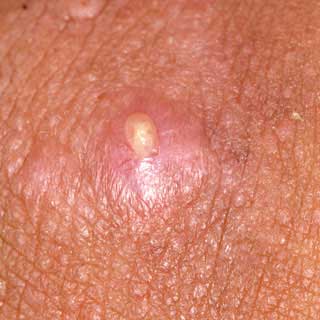Photos

Boil
Boil. A boil is an infection of a hair follicle. It starts as a red lump and quickly fills with pus. As it grows, it becomes more painful. This photo shows the pus-filled center of the boil. A doctor can tell if it needs to be drained and when to do so.
Source: Self Care Decisions LLC
From the Dr. William Weston Collection of Pediatric Dermatology. Used with permission.